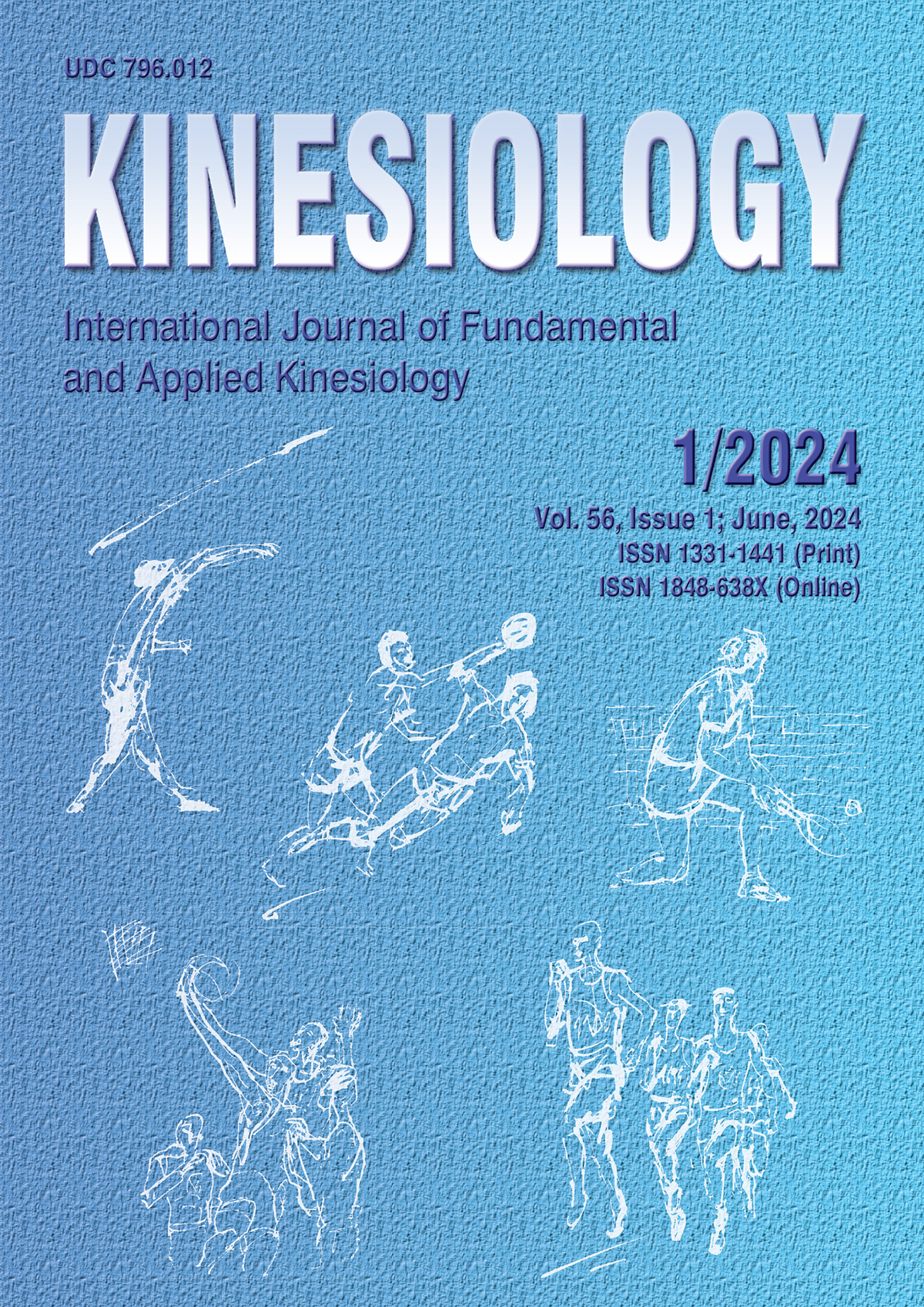EFFECTS OF SHORT AND LONG INTER-SET REST ON MAXIMAL ISOKINETIC STRENGTH AT SLOW AND FAST ANGULAR VELOCITIES IN TRAINED YOUNG MALES AFTER EIGHT WEEKS OF RESISTANCE TRAINING
Keywords:
acute program variables, recovery period, rest between sets, volume, strengthAbstract
Resistance training is a widely used method to enhance muscle strength, with acute program variables influencing muscle adaptations. This study focused on the often-neglected variable of inter-set rest interval duration and its impact on muscle strength gains. Existing literature presents conflicting findings, with some studies advocating for longer rest intervals, while the others show comparable strength increases with shorter rests. Methodological differences in prescription and sample groups contributed to these inconsistencies. This study investigated the effect of short and long inter-set rests on maximal isokinetic strength gains of the upper and lower extremities during slow and fast angular velocities after eight weeks of resistance training. The research involved 26 healthy strength-trained males (age=20±1 year, body mass=81.5±8.8 kg, body height=184.4±6.1 cm) randomly assigned to G1m (1-minute rest) or G3m (3-minute rest). The resistance training programs were matched for all acute program variables, emphasizing the rest interval as the primary difference. Isokinetic dynamometry pre- and post-training assessed knee and elbow extensor and flexor maximal strength at 60º/s and 120º/s. The training program consisted of seven exercises performed at 70% 1RM until muscle failure three times per week over eight weeks. The most important result was that G3m, in contrast to G1m, led to a higher increase in peak torque of the knee (p=.037) and elbow extensors (p=.007) as well as the elbow flexors (p=.045) at 60º/s. Furthermore, G3m and G1m similarly increased the peak torque of the knee and elbow extensors and flexors at 120º/s and of the knee flexors at 60º/s (p>.138). In conclusion, the study suggests that strength training with longer inter-set rest intervals may lead to similar strength gains as strength training with shorter inter-set rest intervals. Nonetheless, individuals who prioritize maximizing their strength gains are advised to utilize longer rest intervals. However, shorter rest intervals may still yield significant strength enhancements, particularly for those who are limited by time.
Keywords: strength training, rest intervals, muscle strength, isokinetic dynamometry
Downloads
Published
How to Cite
Issue
Section
License

This work is licensed under a Creative Commons Attribution-NonCommercial 4.0 International License.
At Faculty of Kinesiology we recognize that access to quality research is vital to the scientific community and beyond. Kinesiology is non-profit journal and all costs of publishing and peer review process are covered by the publisher itself or other funding sources like Ministry of Science and Education of the Republic of Croatia. Full text papers are also available free of charge at http://hrcak.srce.hr/kineziologija. There are no restrictions on self archiving of any form of paper (preprint, postprint and publisher's version).
Articles are distributed under the terms of the CC BY - NC 4.0
Kinesiology does not charge any fees to authors to submit or publish articles in our journal.


